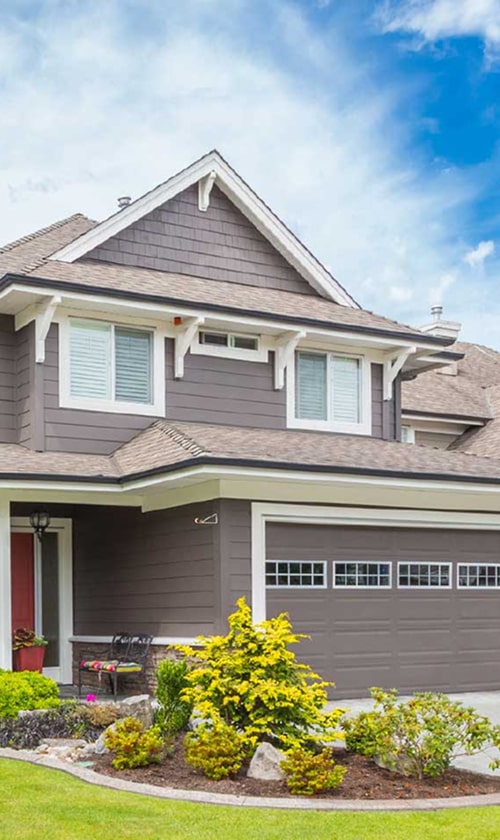Core Components of Energy-Efficient Central Air Conditioning

When we want to reduce cooling costs and save energy, it’s important to look at how a central air conditioner is rated, what features it offers, and how our home is set up for efficient airflow. Efficiency is not based only on the AC unit but also on insulation and ductwork.
Understanding Efficiency Ratings
Central air conditioners use two main ratings to measure energy efficiency: SEER (Seasonal Energy Efficiency Ratio) and EER (Energy Efficiency Ratio). These numbers tell us how well an AC unit cools compared to the energy it uses.
A higher SEER rating means better efficiency. Most modern systems are rated at least SEER 14, but ENERGY STAR® certified models often reach SEER 16 or higher. EER is also important, especially in very hot climates, because it measures the efficiency at a set temperature. Units with high SEER and EER ratings usually use less power.
Key Points:
- SEER: Measures seasonal efficiency (higher is better).
- EER: Measures steady-state efficiency at specific conditions.
- ENERGY STAR: Labels the most efficient units in the market.
Key Features and Technologies
Energy-efficient central air conditioning systems use features that help save energy. We see variable-speed compressors and fans in the best systems. These parts adjust how hard the system works, so it only uses as much energy as needed.
Smart thermostats are another important feature. These help us control the temperature better and prevent wasted energy. Some units offer zoning capabilities, allowing us to cool only rooms we use.
Common energy-saving features:
- Variable-speed motors
- Two-stage or multi-stage compressors
- Smart or programmable thermostats
- Zoning controls
Having these features can lead to lower energy bills and a more comfortable home.
How Ductwork and Insulation Affect Efficiency
Even the most energy-efficient AC system won’t work well if our home’s ductwork and insulation are not in good shape. Duct leaks can let cooled air escape, making the system work harder and wasting energy.
Proper duct sealing and insulation keep air moving where we need it. Poor insulation in attics or walls lets heat enter, making our central AC units run more often. Both problems mean lower efficiency and higher electricity costs.
What to check:
- All duct joints tightly sealed
- Ducts run through insulated spaces, or are themselves insulated
- Attic and wall insulation meet local building codes
Good ductwork and insulation support energy-efficient HVAC systems by keeping cooled air inside and hot air out. This makes a big difference in how much energy our central air conditioning system uses.
Top Energy-Efficient Central Air Conditioning Systems

We can choose from several top-rated central air conditioning systems that keep homes cool while saving energy. The technology used and the type of system make a big difference in both performance and cost.
Leading High-Efficiency Models
Several models lead the way for energy efficiency and reliability. The Lennox XC25 and Lennox SL28XCV both have SEER ratings above 25, which means they use less electricity than older ACs. The Carrier Infinity 26 is another high-performing system that offers precise temperature control and energy savings.
The Trane XV20i and Amana AVXC20 also stand out for their efficient variable-speed compressors. The Daikin DX20VC uses an inverter compressor for steady cooling and lower energy use. Some homeowners choose systems from Armstrong Air or the Lennox Signature Series for similar features and savings.
| Model | SEER Rating | Compressor Type | Features |
|---|---|---|---|
| Lennox XC25 | Up to 26 | Variable-Speed | Ultra-quiet, Wi-Fi |
| Carrier Infinity 26 | Up to 26 | Variable-Speed | Smart sensors, humidity |
| Trane XV20i | Up to 22 | Variable-Speed | Precise comfort |
| Amana AVXC20 | Up to 24.5 | Variable-Speed | Lifetime warranty |
| Daikin DX20VC | Up to 24.5 | Inverter | Quiet, energy efficient |
| Lennox SL28XCV | Up to 28 | Variable-Speed | ENERGY STAR® certified |
Variable-Speed and Inverter Technology
Variable-speed compressors adjust their speed depending on the cooling needs of the home. Systems like the Lennox XC25, Carrier Infinity 26, and Trane XV20i use this technology to save electricity and make the temperature more stable.
Inverter compressors found in models like the Daikin DX20VC and Lennox Signature Series work in a similar way. They run at different speeds instead of stopping and starting, which means less wasted energy and less noise.
These systems usually cost more up front, but energy savings over time help make up the difference. For people looking to lower their utility bills year after year, choosing a variable-speed or inverter AC is a smart choice.
Comparing Split and Packaged Systems
Split systems have an indoor and an outdoor unit. This setup makes them quiet and easier to service. Models like the Lennox XC25 and Carrier Infinity 26 are split systems with excellent efficiency.
Packaged systems put all parts compressor, coils, and air handler—outside in one cabinet. While they save space and are easy to install, they are usually not as efficient as split systems. Most packaged units have lower SEER ratings, so they may use more energy over time.
Split systems also let us pick from more high-end, two-stage and variable-capacity ACs. For the best mix of efficiency and comfort, homeowners often prefer split systems, especially if they want the latest technology and top SEER ratings.
Optimizing Efficiency and Performance

When we want the best from our central air conditioning system, we have to look at the right size, special home needs, and features that improve comfort. Making smart choices helps us save energy, keep our homes cool, and reduce noise.
Sizing and BTU Requirements
Choosing the correct size is the first step. When an air conditioner is too big, it cools our home too fast and leaves the air feeling damp. If it’s too small, it runs too long and wastes energy without keeping us cool enough.
We should match the system’s cooling capacity to our home’s size. Cooling is measured in BTUs (British Thermal Units). As a rule, most homes need about 20 BTUs per square foot, but large windows, high ceilings, and sun exposure matter too.
A central air conditioning unit is usually rated in tons. One ton equals 12,000 BTUs per hour. Most average homes need a system between 2 to 5 tons. For the best results, a certified HVAC professional can do a full calculation called a Manual J load calculation. This makes sure our system is not too big or too small.
Climate and Home Factors
The climate we live in changes our cooling needs. Hotter areas need systems with more BTUs. If we live in a place with mild summers, we can go lower. Our home’s features change things, too.
Homes with good insulation, energy-efficient windows, and sealed doors keep cool air inside. If our home has many windows that face the sun, we need a unit with a higher cooling capacity. Shade from trees helps, while rooms with high ceilings may require more power.
| Home Factor | Effect on Cooling Needs |
|---|---|
| Lots of windows | Increases BTU needed |
| Good insulation | Reduces BTU needed |
| High ceilings | Increases BTU needed |
| Shade from trees | Reduces BTU needed |
Looking at these factors helps us pick the most efficient and comfortable system.
Dehumidification and Quiet Operation
Good temperature control is not just about cool air. It’s also about keeping the air dry. Some central air systems remove more humidity (water vapor) from the air. Lower humidity makes us feel cooler and stops mold growth.
Some newer cooling systems use variable-speed fans and compressors. This means our system can run at slower speeds when the demand is low. Benefits include:
- Less noise during operation
- Even temperature throughout the home
- Better moisture control
We should look for features like a “quiet” or “low-noise” rating if we are sensitive to sound. Strong dehumidification and silent running make our home more comfortable while using less energy.
Maximizing Energy Savings and Cost Benefits
Choosing energy-efficient central air conditioning helps us lower utility bills, reduce stress on the environment, and improve home comfort. By combining the right system features, smart controls, and regular maintenance, we can see real cost savings over time.
Reducing Energy Consumption and Costs
We can lower our cooling costs by choosing air conditioners with high SEER (Seasonal Energy Efficiency Ratio) ratings. A higher SEER means the unit uses less energy to cool the same amount of space. This results in lower monthly energy costs.
Looking for available rebates and incentives from utility companies or government programs also helps. These programs often offer cash back or tax credits when we upgrade to efficient systems. Checking for incentives before buying can reduce our upfront costs.
Simple actions like sealing windows and doors, adding insulation, and using blackout curtains help our system run more efficiently. Small steps like these keep cold air in and hot air out, which means our system works less and costs go down.
Smart and Programmable Controls
Using a smart or programmable thermostat lets us control our cooling schedule to match our daily routine. We can set higher temperatures while we’re away and cool the house just before we get home, using less energy overall.
Some smart thermostats connect to WiFi and allow remote control by smartphone or tablet. This feature makes it easy to make adjustments from anywhere. With learning features, they can even adjust based on our patterns, which can bring even more savings.
| Feature | Benefit |
|---|---|
| Programmable Schedules | Customized cooling patterns |
| Remote Control | Adjust settings from anywhere |
| Energy Usage Reports | Track patterns and spot high usage |
Maintenance for Sustained Efficiency
Regular maintenance keeps our central air conditioning running at its best. Simple tasks like changing air filters every 1-3 months make a big difference. Dirty filters make the system work harder, raising our utility bills.
We should schedule professional check-ups at least once a year. Technicians check refrigerant levels, clean coils, and inspect electrical connections. Catching issues early can save us from bigger, more expensive repairs and help our system last longer.
Cleaning vents and making sure air can move freely also maintains efficiency. When all these tasks are done, our system uses less energy, and we see more cost savings over time.
Environmental and Sustainability Considerations
Energy-efficient central air conditioners can help us save energy and lower our environmental impact. By choosing the right systems, we can reduce our greenhouse gas emissions and support a move toward more sustainable homes.
Reducing Carbon Footprint and Environmental Impact
When we use less electricity for cooling, we directly lower our carbon footprint. Central air conditioners with higher SEER (Seasonal Energy Efficiency Ratio) ratings use less energy than older models. This cuts down on the amount of fossil fuels burned at power plants, which helps lessen climate change impacts.
We should also look at how refrigerants affect the environment. Newer systems often use refrigerants with a lower global warming potential (GWP) than older units. By replacing older models, we can help reduce harmful greenhouse gas emissions.
Window and portable air conditioners are less energy efficient, so switching to central air or air-source heat pumps can make a big difference. Air-source heat pumps with high HSPF (Heating Seasonal Performance Factor) ratings offer both heating and cooling, lowering our need for separate systems.
Sustainable AC Options and Alternatives
Some central air conditioning options are more sustainable than others. Air-source heat pumps stand out, as they work efficiently in many climates and generally use less electricity year-round. A high HSPF rating means better performance and lower emissions over time.
We can also choose systems with advanced features like variable-speed compressors, smart thermostats, and eco-friendly refrigerants. Some models are ENERGY STAR® certified, which ensures higher efficiency and environmental benefits.
For even more impact, pairing our AC system with renewable energy sources such as solar panels can further reduce our reliance on fossil fuels. Good maintenance, like cleaning filters and regular servicing, also plays a key role in ensuring any system runs at its best for the environment.




